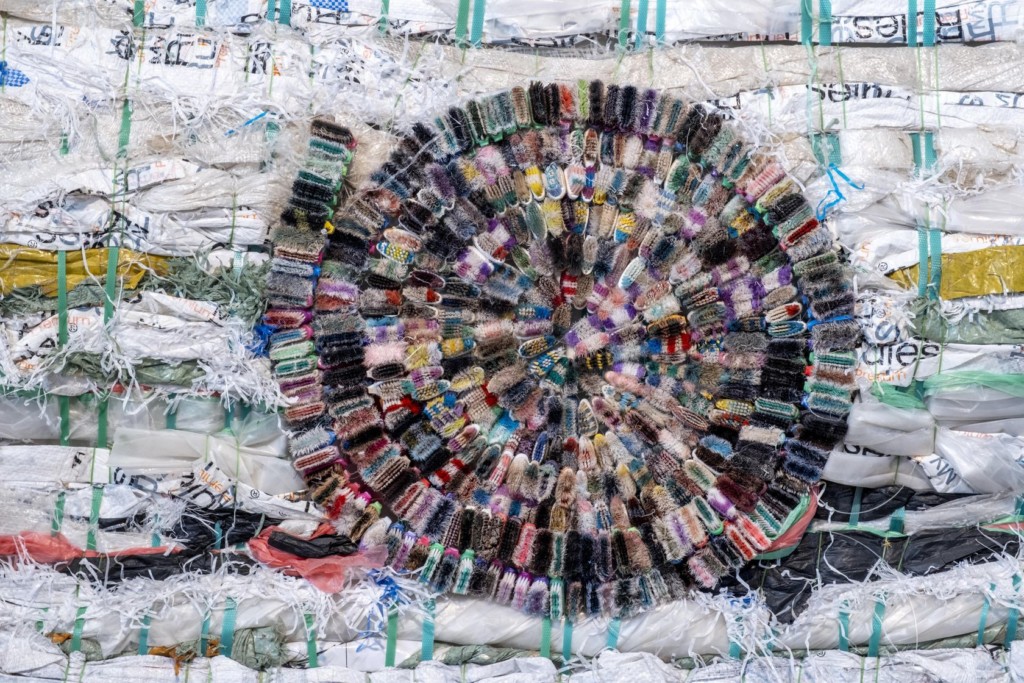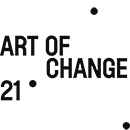Contemporary artists are at the forefront when it comes to monitoring and interpreting the signals of our times, constantly delving into their creative energies. For its first edition of 2024, Impact Art News interviewed 17 contemporary artists engaging with environmental themes to identify the major trends ahead.
Davide Balula, Bianca Bondi, Carolina Caycedo, FormaFantasma, Lonneke Gordijn (Studio Drift), Janet Laurence, Daniel Steegmann Mangrané, Haroon Mirza, Marie-Luce Nadal, Lucy Orta, Yan Wang Preston, Lionel Sabatté, Ugo Schiavi, Timur Si-Qin, Moffat Takadiwa, Michael Wang and Bo Zheng shared with us their visions, expectations, projects, and predictions for 2024. This article is the first of a new column, “Sustainable Art Trends,” dedicated to the observation and analysis of environmental issues in the cultural sector.
A year to redefine the perception of our world
Many of the artists interviewed declared that they were in an introspective process regarding their artistic practice, particularly with regard to the cultural and environmental impact they leave behind. The imprint and historicity of creation is becoming an essential consideration, in which future generations are taken into account. This question finds itself at the core of the projects coming in 2024, at the same time multi-disciplinary, collective, and large-scale initiatives. Far from the archetype of the “lone genius” artist, many of them will be transcending traditional boundaries to drive change in countries lagging behind in the ecological transition.
Some of these artists warn us about the anthropocentrism of our modern societies and encourage cultural professionals to rethink the human condition differently. Inspired by anthropology and science, many environmentally – committed artists see our humanity as a component of a larger entity, where interdependent relationships predominate and extend across different scales – from the microscopic to the cosmic – thereby blurring the lines between the animate and inanimate, as well as between humans and biodiversity. Bearing those same values, philosophers Juliana Fausto, Donna Haraway, Andreas Weber, and even the contemporary artist Haley Mellin are mentioned by the artists as inspirational sources for 2024.
« Ecocide and genocide go hand in hand. We cannot normalize the horror of claiming land by destroying it with bombs. I hope violence against ecosystems and communities comes to an end. » – Carolina Caycedo

Moffat Takadiwa, Golden Doors (a) & (b), 2023, Plastic bags, toothbrushes, spools, various materials. Courtesy of the artist and Semiose gallery.
Artists increasingly pushing for a more sustainable cultural industry
A significant majority of artists expect more coherence from the contemporary art world, particularly from galleries and institutions when it comes to exhibition processes, but also from collectors and foundations when it comes to market operations. These artists, whether long-standing or more recently committed to an ecological approach, now intend to change the game and assert their conviction on the contemporary art community. Some of them are already implementing specific protocols – avoiding the use of specific materials, using recycled packaging, or requesting grouped transport – thus forcing cultural organizations to incorporate more sustainable practices, particularly when it comes to the transport and reuse of materials.
Two artists went even further, raising the question of intellectual property and the concept of artwork “originality”, exploring the idea of reproduction as an ecological solution. These issues are intertwined with the emergence of new technological tools such as the blockchain, perceived as reassuring, or artificial intelligence, which questions the idea of artistic creation itself. In response, the artists evoke a revival for live performances and events, which underline the importance of the artist’s hand – and body – at the center of artistic creation.
“Artists, as activists, are not only campaigning for raising awareness towards environmental issues. They are also actively searching for solutions from personal, embodied, and community-driven perspectives.” – Yan Wang Preston
Incorporating crafts, rituals, and ancient cultures to restore a forgotten bond with nature
This year, many of the artists interviewed are focusing their research on ancient civilizations, rituals, and non-industrial savoir-faire rooted in communion with nature. Among them, some predict a revival of ancestral techniques in contemporary art, such as tapestry or embroidery, involving women’s social inclusion in our societies. We are rediscovering techniques, forgotten stories, prophecies, and occult sciences that were marginalized, defined as kitsch or obsolete, but that are now being exhumed and seen in a whole new light, offering us a new understanding of the world.
“Environmentally engaged art cannot speak in generalities and instead must situate itself within the highly contextual matrices of time and place.” – Michael Wang
Recognizing a world on the edge of collapse
The majority of artists interviewed pointed to institutions, power structures, and lobbies as responsible for an obsolete system that runs against the common good. The commodification of art, the financial and speculative dimension of the art market, is criticized for its dehumanizing approach, depriving contemporary art of its sensitive aspect.
At a time when the ecological crisis is getting worse, we can find hope in solidarity, and togetherness. The cultural initiatives of our featured artists are driven by two different but complementary dynamics. On the one hand, they shed a critical light on our dependence on a mortifying political system, and on the other, they conceive a new world ruled by care, solidarity, and even spirituality, where possibilities are still multiple.
A more pessimistic minority has accepted the idea of an “after”. These artists are already preparing themselves for the climate crisis, the steady extinction of our planet’s biodiversity, and, by extension, of the human species. In recognition of their vulnerability, a new path towards resilience can be drawn, embracing our disparities, our differences, and our singularities to create new imaginaries and ways of thinking.
« It’s not enough to do things better, more sustainably, more fairly… we need a new way of understanding our place in the world, and the arts are a privileged place to work on it. » – Daniel Steegmann Mangrané
Claire Vannaxay
in collaboration with Pauline Lisowski, Aloïs Loizeau, Alice Audouin, and Stefano Vendramin
Translated by: Claire Vannaxay, Stefano Vendramin, and Zoé Reed
Cover image: Samur, Bo Zheng, 2023
More Information : Davide Balula, Bianca Bondi, Carolina Caycedo, FormaFantasma, Lonneke Gordijn (Studio Drift), Janet Laurence, Daniel Steegmann Mangrané, Haroon Mirza, Marie-Luce Nadal, Lucy Orta, Yan Wang Preston, Lionel Sabatté, Ugo Schiavi, Timur Si-Qin, Moffat Takadiwa, Michael Wang and Bo Zheng.
Impact Art News, Jan-Feb 2024 #47

